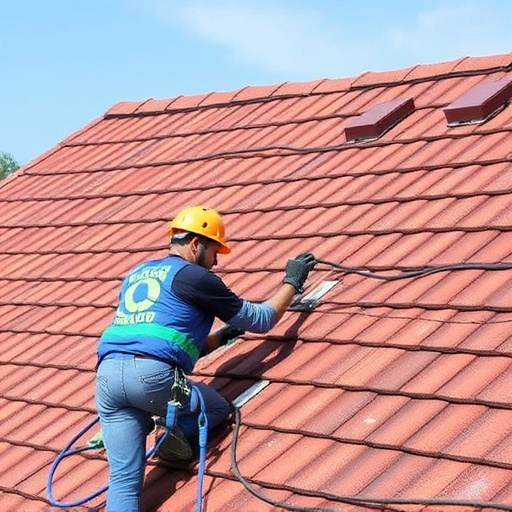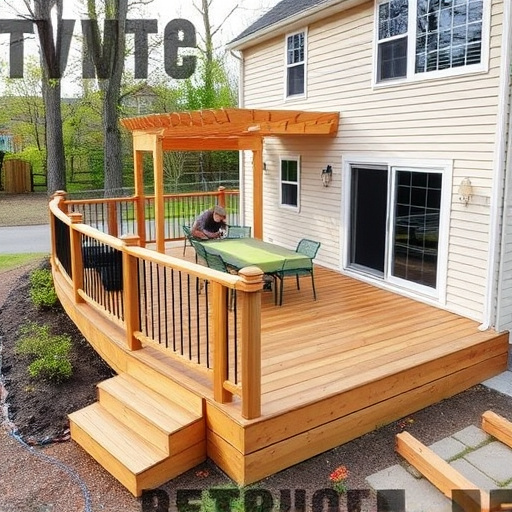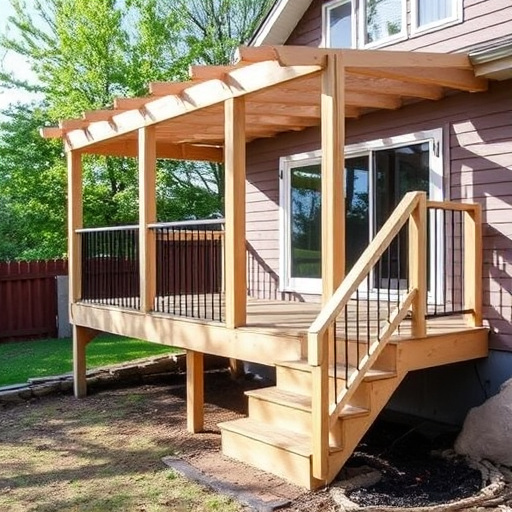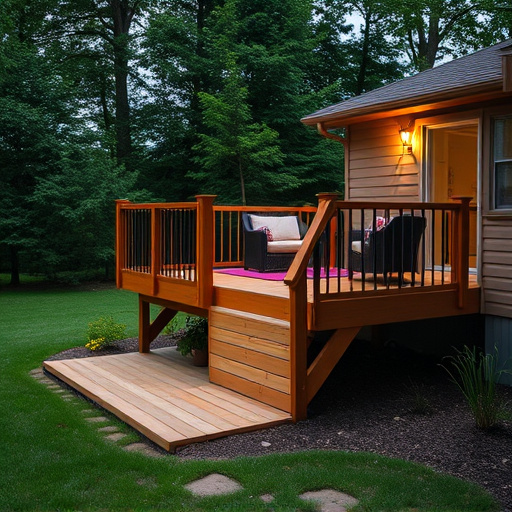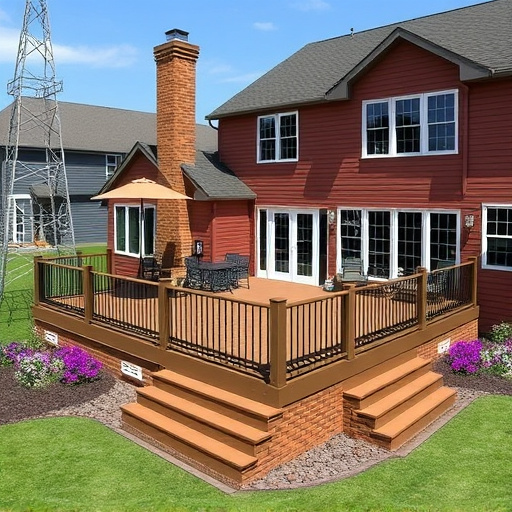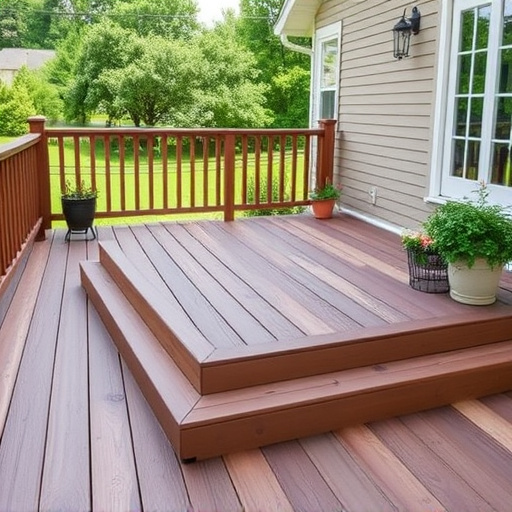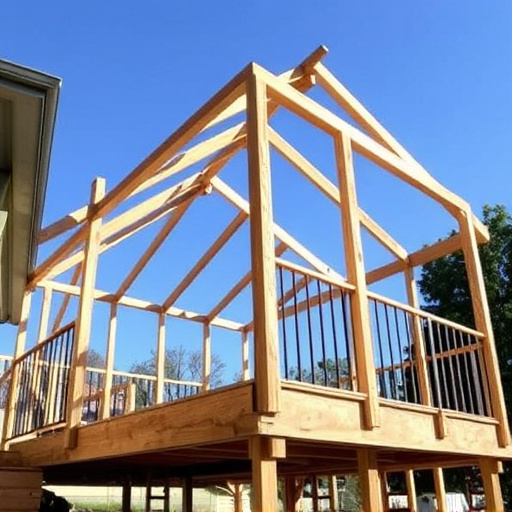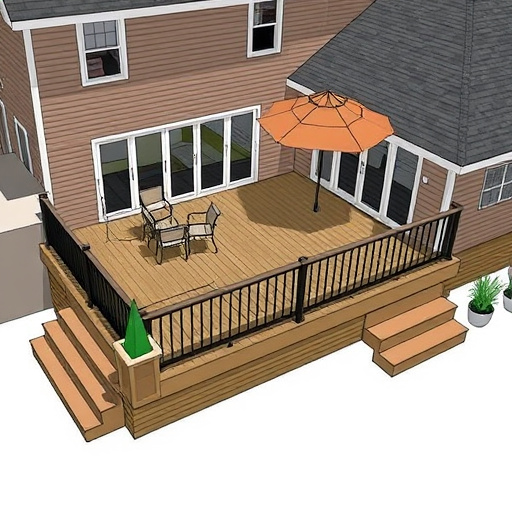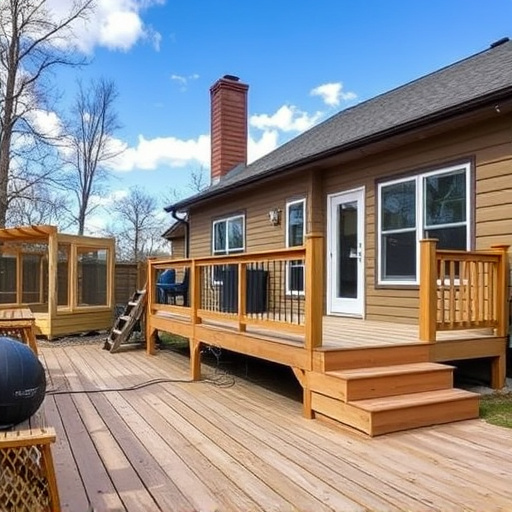Designing a durable and aesthetically pleasing deck requires understanding local climate conditions. Material choices like composite wood or treated lumber are ideal for moist climates, while harsher regions demand fiber cement boards or metal decking. Incorporating strategic designs, such as shaded canopies and drainage systems, enhances climate resilience. Using eco-friendly materials and adding natural features like trellises extends the deck's lifespan, ensuring a beautiful and functional outdoor space tailored to diverse weather conditions.
Discover how climate influences your deck design choices with our comprehensive guide. From understanding critical climatic factors to selecting suitable materials, we explore what works best for diverse weather conditions. Learn about incorporating sustainability and climate-resilient features that not only enhance the durability of your deck but also contribute to a greener environment. Get expert tips to make informed decisions tailored to your local climate, ensuring a stunning and resilient outdoor space.
- Understanding the Climatic Factors That Influence Deck Design
- Material Choices for Decks in Diverse Climates
- Integrating Sustainability and Climate-Resilient Features in Deck Construction
Understanding the Climatic Factors That Influence Deck Design
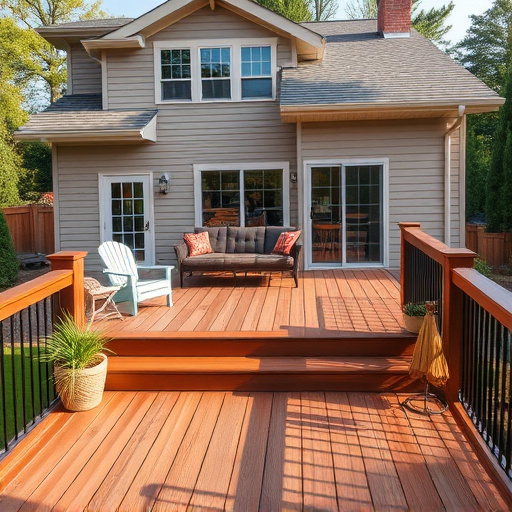
When it comes to designing a deck, climate plays a significant role in dictating the materials and styles that are most suitable for your outdoor living space. Understanding the specific climatic factors in your region is crucial for creating a durable and aesthetically pleasing deck design. Consider the average temperatures, precipitation levels, and sunlight exposure throughout the year. For instance, in regions with mild summers and frequent rainfall, water-resistant decking materials like composite wood or treated lumber may be preferable over natural wood, which can rot or warp under excessive moisture.
Additionally, wind patterns and extreme weather events should factor into your decision-making process. In areas prone to strong winds, a deck design that incorporates robust structural support and securely fastened railings is essential for safety and stability. Moreover, considering the local climate when selecting roofing solutions for your deck can enhance overall functionality. Home service solutions offering roof repairs or installations with climateshield technology can protect your deck from the elements, ensuring it remains a comfortable and low-maintenance retreat for years to come.
Material Choices for Decks in Diverse Climates
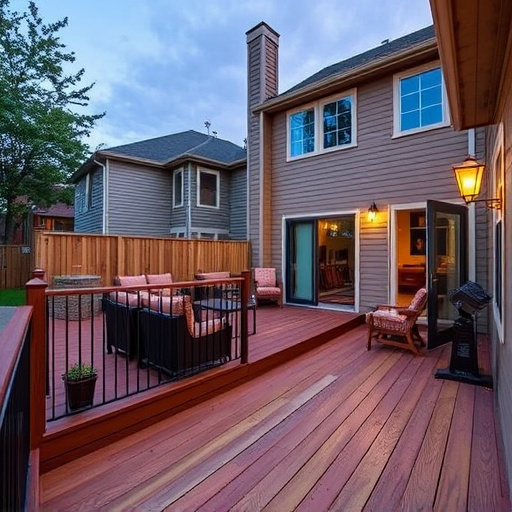
When designing a deck in diverse climates, material choices play a significant role in ensuring durability and aesthetic appeal. In regions with mild weather, natural materials like wood or composite decking offer both beauty and functionality. However, in harsher climates characterized by extreme temperatures, high precipitation, or strong winds, the choice of materials becomes more critical. Waterproof and durable options such as fiber cement boards or metal decking are ideal for these conditions, providing long-lasting performance against the elements.
Professional siding services can also be leveraged to enhance deck design in diverse climates. Commercial siding options made from high-quality materials like vinyl or fiber cement not only offer superior protection against weather damage but also add a layer of insulation, maintaining the deck’s structural integrity and beauty over time. These choices are particularly beneficial for areas prone to severe winters or intense summers, ensuring the deck remains a functional and inviting space for years to come.
Integrating Sustainability and Climate-Resilient Features in Deck Construction
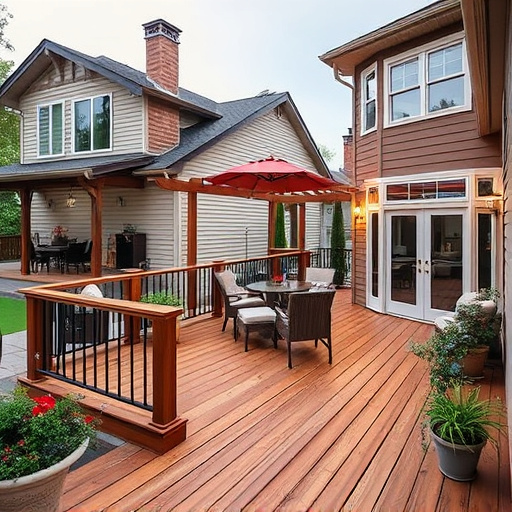
When designing your deck, integrating sustainability and climate-resilient features can enhance both its aesthetic appeal and longevity in varying weather conditions. Incorporating materials that are eco-friendly and durable, such as recycled wood or composite decking, reduces environmental impact while ensuring your deck stands strong against harsh elements like rain, snow, and extreme temperatures.
Additionally, strategic design choices like adding a shaded canopy or overhang can mitigate the sun’s intense rays during summer months, reducing heat buildup on the deck surface. Consider implementing climate-adaptable features like drainage systems and elevated decks to safeguard against flooding and ground water damage. Even simple touches like well-placed trellises or climbing plants can offer natural shade, further enhancing comfort and extending the usable life of your outdoor living space. Integrating these sustainable and resilient elements seamlessly into your deck design not only contributes to a healthier planet but also ensures a longer-lasting and more enjoyable deck for years to come, complementing any roof replacement, siding and gutters, or siding installation projects.
When designing your deck, considering climate is no longer just an option—it’s essential. By understanding the unique climatic factors of your region, selecting suitable materials, and integrating climate-resilient features, you can create a durable, sustainable, and aesthetically pleasing outdoor space that thrives for years to come. These choices not only enhance your home’s value but also contribute to a greener future. Remember, thoughtful deck design adapts to—and minimizes the impact of—ever-changing weather patterns, ensuring your sanctuary remains a haven all year round.


